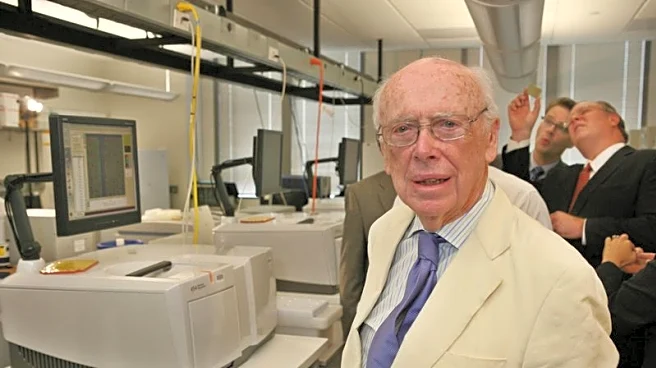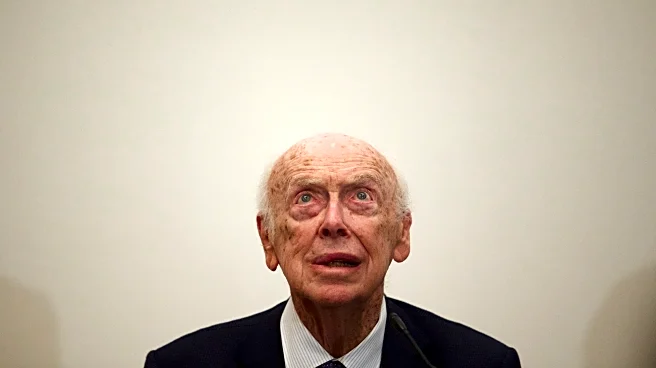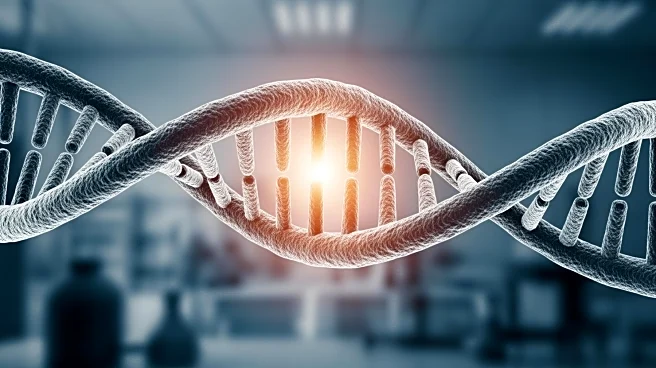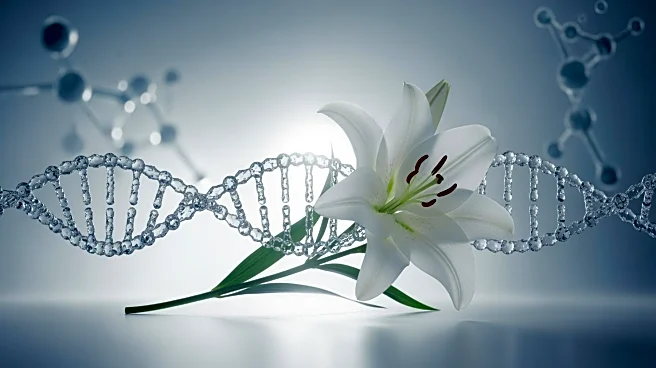What's Happening?
The historical race to discover the structure of DNA involved key figures such as James Watson, Francis Crick, and Rosalind Franklin. Watson and Crick, working at the University of Cambridge, developed
models to test their theories on DNA's structure, ultimately proposing the double-helix model. Concurrently, Franklin and Maurice Wilkins at King's College London were conducting X-ray diffraction studies, producing the critical 'Photo 51' that hinted at DNA's helical shape. Despite tensions and competition, these scientists' collaborative efforts led to the groundbreaking understanding of DNA's molecular structure, earning Watson, Crick, and Wilkins the Nobel Prize in 1962.
Why It's Important?
The discovery of DNA's structure was a pivotal moment in science, providing insights into genetic information transfer and cellular processes. This breakthrough has had profound implications for medicine, biotechnology, and understanding genetic diseases. The collaborative yet competitive nature of this scientific endeavor highlights the importance of interdisciplinary research and the sharing of knowledge. Franklin's contributions, although not recognized with a Nobel Prize due to her untimely death, underscore the critical role of women in science and the need for equitable recognition.
What's Next?
The legacy of the DNA discovery continues to influence scientific research, with ongoing studies in genomics and personalized medicine. The ethical considerations surrounding genetic research, including privacy and genetic modification, remain central to public policy discussions. As the scientific community reflects on the contributions of Watson, Crick, and Franklin, there may be renewed efforts to recognize and celebrate the diverse contributions to scientific advancements.
Beyond the Headlines
The story of DNA's discovery highlights the ethical and cultural dimensions of scientific research. Franklin's experience points to the challenges faced by women in science and the importance of addressing gender disparities. The competitive nature of the discovery process raises questions about collaboration versus competition in scientific innovation. These historical insights continue to inform contemporary discussions on scientific ethics and the recognition of diverse contributions.













